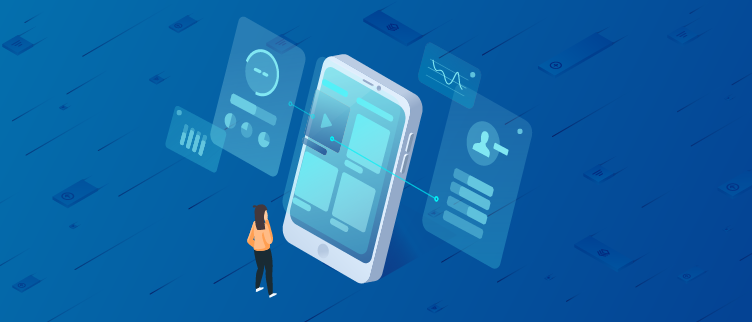Users typically face limitations regarding mobile devices‘ performance and battery life in the long run. This is why more and more people are wondering how to optimise your device’s capabilities while preventing battery drain or work lag.
Nobody considers an application’s true potential until it takes time to run. You will ideally look for alternatives only if you face this once. More and more people are taking this route since many contemporary options are available online.
According to a Mobile App Development Service study, a rough 70% of people choose to move on from the application once it starts delaying running. Moreover, most users that have underwhelming experiences express their annoyance through product ratings. This directly influences the number of app downloads.
How To Improve the Performance of Android Applications In 2023?
While the world is fast becoming a mobile-friendly society, showing dependence and putting effort into understanding are two different things. If you are on the side-lines, you must ideally comprehend why mobile applications are the future of business expansion worldwide.
Mobile applications essentially put life into your smartphones. You must note that convenience, utility, and variety are essential to business growth. Therefore, you must make it a point to develop a dedicated application to avoid lagging behind the curve and out of the race with your competitors.
How Does a Mobile Application Become Successful?
You must essentially monitor many variables to identify a practical mobile application. This is because its performance is more extensive than just its speed:
- The application supports the platforms it runs on (screen resolution, system requirements, etc.).
- It promises reasonable battery and memory usage
- It allows an easy user experience and intelligent navigation.
- The application mustn’t lose user information or progress while running in the background.
- The necessary third-party applications and device services are natively and efficiently integrated.
Essential Metrics to Evaluate the Performance of Android Applications
It would be best if you concentrated on understanding how to track the performance of your Android application before attempting to modify it. These indicators will help you establish a standard and better gauge the impact of your efforts.
- Frames Per Second
Note that FPS is a critical indicator of Android application performance. This will be known to those interested in video gaming or photography. The frame rates reveal how the end user uses your application on their device.
Therefore, your application should ideally run seamlessly and smoothly on Android. It would be best if you made a point to have a frame rate of between 60 and 90 FPS in your application. This is what the Android experts call Janky frames. Your application must refrain from a condition where the user operates a sluggish UI rendering, resulting in a persistent flicker on the user screen.
- Consumption and Management of Memory
Every application eats up some memory respectively in a mobile phone. Your application will cause a memory error if your Android software utilises more memory than is necessary. Therefore, you must ideally monitor your application’s memory usage and decrease it if it’s out of bounds.
- Network Efficiency
You must also ensure appropriate optimisation of network configurations in your application if it requires internet access. Android applications often suffer from performance issues such as unstable Wi-Fi access points, network congestion, and sluggish or intermittent network connectivity.
You may ideally develop your Android online application that runs smoothly on the network entirely offline first. This will allow you to be confident about your application working correctly, even with a network connectivity issue.
Here are some pointers for improving your mobile device’s battery life and performance.
- A Software Update
You may essentially begin optimising your mobile application by updating the software consistently. This is undoubtedly the most straightforward method for increasing your device’s performance and battery life. You can expect software updates to include bug fixes, security patches, and performance improvements. This could provide a necessary boost to your device’s overall performance, stability, and security.
Therefore, you must always make it a point to regularly check your device settings and upgrade your operating system, applications, and firmware. You may also resort to automatic updates to save time and frustration.
- Control Your Applications
You can continually improve your mobile phone’s performance and battery life by strategically managing the applications. They typically use many resources- especially if they sync data, generate notifications, or function in the background. Therefore, you may ideally consider removing or disabling any application you don’t frequently used to reduce application usage.
Furthermore, you may also find it convenient to turn off notifications for non-essential applications and close or force-stop any unopened programs. Restricting background sync and data for applications that don’t require regular updates could also contribute to the objective.
- Reduce Load Time by Resizing, Caching, And Compressing
Your mobile application will consume more time and be less efficient if it processes heavy images. This is where you may consider a few actions to make your application work more quickly. It would be best if you ideally looked to compress the images without affecting the resolution. Moreover, you could also look for image resizing to accommodate your mobile application adequately.
There is also the scope for caching that allows you to download pictures from the network into the computer’s memory. Therefore, mobile applications can access their internal memory rather than constantly load it from the external network once it arrives.
- Reduce The Features That Are Not Necessary for The Program Performance
While the unnecessary features often contribute to making your application look nicer, they also slow down its performance. Therefore, you may look to improve your application’s speed, responsiveness, and general performance by shedding extra weight and enhancing essential functions.
- Use Data Templates Again to Make Your Application Load More Quickly
You will effectively boost your program performance by loading minimal data templates. According to professionals, you may consider using the data templates you already have instead of developing new ones for your application; being resourceful results in carrying less weight.
- Develop An Offline Mode to Counter a Lost Network Connection
You may consider developing an offline mode to counter an unexpected loss of network connectivity. This approach will allow you to generate a buffer to save your data securely. You would effectively lose all your data without an offline mode.
You typically can keep your data offline with the promise of access once the network is up and running again. Offline mode equals information security, dependability, and user comfort.
To Sum Up
You must promise the user reliability, usefulness, and user-friendliness while developing a mobile application. Your application must be quick, thorough, and limited to information directly related to how well they work.
Optimising your mobile application will ultimately result in enormous income and customer pleasure. This is essential since the market for mobile applications has expanded rapidly over the past few years. For this reason, the experts advise you to learn more about the mobile app development lifecycle.
To maintain the efficient operation of your Android application, it is crucial to recognise and be ready for various performance difficulties and bottlenecks. Android has constraints and problems that developers must be aware of.
Despite following the checklist, you may look to bring in an external council if your mobile application is still underperforming. This approach will allow you to identify and adequately address the root cause.








